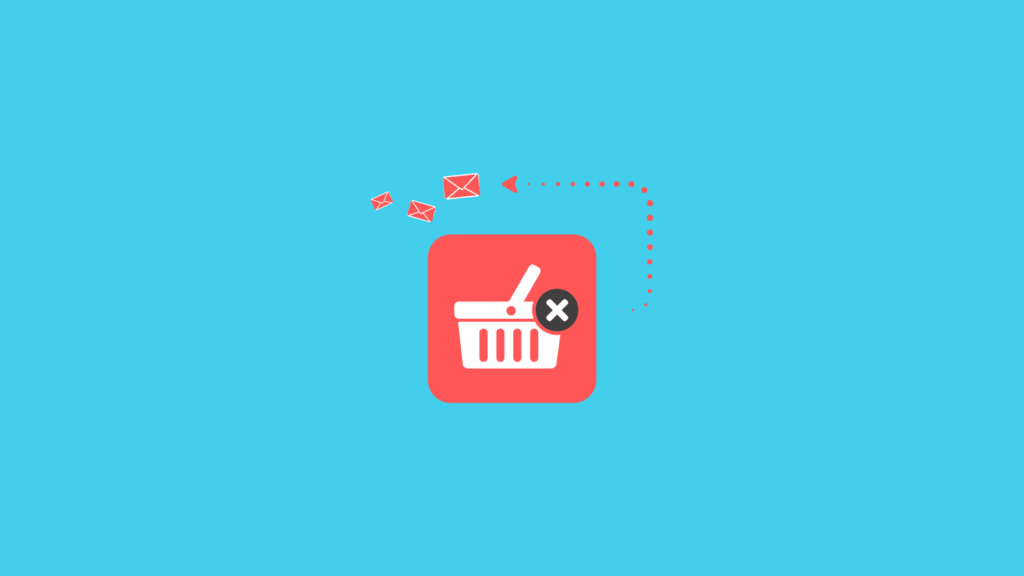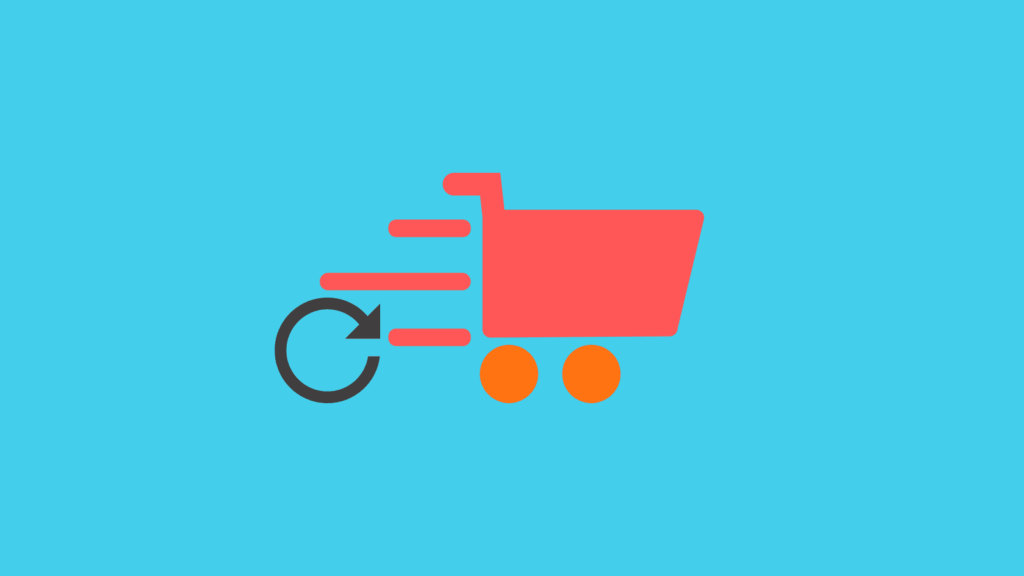12 Ways to Recover Abandoned Carts and Make More Sales as an eCommerce Owner
You want to ensure your customers keep making purchases from your eCommerce store and do not abandon their carts when shopping from your store. Check out these tips.

I can imagine the feeling. You have worked hard to drive your target customer to your online business. They engage with your content, learn more about what you offer, and decide to take action to buy something from you.
They start filling their shopping cart with the products or services they want.
Then, the worst happens.
They change their mind during buying and leave your business for another.
So painful, right?
To see your customers walk out of your business and make their purchases from your competitors.
This may have been going on for a while, and you have been thinking. How can I ensure that my target customers don’t leave my website and continue to finish their purchases from my site?
Well, I got you. This article will give insights on recovering abandoned carts from your target customers, helping them finish their purchases, and generating more sales for your business.
In this article

What are Abandoned Carts
This is when your target customers decide to purchase from your online website. They pick the shopping cart, start the process, don’t process to checkout, and finish the purchase process.
Reasons Why Customers Abandon Carts
Complicated Checkout Process
Some target customers hate when the process of making a payment is complicated. For instance, when your customers pick the shopping cart, they want to go ahead and make the purchase. They want to go to compilation without any complications.
However, when those customers find the purchase process is long and demands more than they had in mind, they can abandon the cart and leave the site. Therefore, ensuring the process is short and smooth for buyers to make the payment is essential. You can also have a live chat on your website to help your customers and guide them through the process if they face challenges in the purchase process.
Poor Customer Support
Target customers may need some help as they proceed with the checkout process. Customers can abandon the cart if your business lacks professional customer support to address those challenges.
Your business should have a 24/7 customer support system to address target customer needs. When customers get the help they need when shopping, it can help strengthen their trust in your brand and even make more purchases from the business.
High Shipping Costs
Sometimes target customers can start the buying process from a brand. However, in the middle of the process, they learned that they would have to incur more expenses in shipping the products they were planning to buy.
If they see that the expenses will be too much for them, they will leave the cart and abandon the buying process.
Having to Create an Account/ Lack of Guest Checkout Option
Target customers can visit a brand and start the shopping process. However, in their final stage, they realize they must create an account to finish the payment for their goods.
Most people hate this.
So they will be left with just one option. To leave everything and look for another site to buy the products. They don’t want to spend their effort and time creating an account.
Limited Payment Option
Customers pick a shopping cart and start the buying process from your shop. However, at the end of the process, they discover that their payment option isn’t available to them.
They will have no option but to leave the cart as they cannot make the purchase. To avoid this, use different payment methods in your checkout process. Then, it will be easy for customers to make payments with their preferred method and complete the checkout process.
Bad Return Policy
Return policy is one significant thing buyers check out before they purchase your products. In case of problems with what they buy, they want to know how to exchange or return for a better one. Other things that come along with a return policy include:
- The list of items that are returnable once you purchase
- Who will cater for the cost of returning the items
- Under what conditions should the items be returned
- What is the maximum time a customer can return an item
Most businesses set a return policy of two weeks or a month. If customers start the checkout process and find that the return policy doesn’t suit them, they will not risk finishing the purchase, and instead, they will abandon the cart.
How to Recover Abandoned Carts for Online Business

You may wonder how to recover abandoned carts from your customers and get them to purchase your business. Try out these ways:
1. Offer different payment options
Give your target customers the freedom to choose the mode of payment they want to use to check out their buying process. Ensuring you have different payment options that customers can use is essential.
They will not have to struggle when it comes to payment as they have one or more options that they can use to finish the process. For example, a customer can pick a cart and add the shopping items.
However, if they find that their preferred payment method is unavailable, they may abandon the cart and find another business. Therefore, to be safe and avoid losing a customer, have different payment methods that are simple to use.
2. Give social proof to build trust
The fact that a customer has picked a shopping cart doesn’t mean they will complete the process. Some question whether the product or service will help them get what they want.
Having social proof and testimonials from other customers on social is essential. If they change their minds, they can see that your business offers value from the testimonials of others who have used it and seen great value.
For example, if a target customer wants to use a Shopify site and then self-doubts kick in, testimonials help strengthen their trust to use the brand.

Source: Shopify
They will have peace of mind and eventually get on with completing the whole process.
3. Use abandoned cart emails to remind them
Sometimes, your target customers can abandon the carts because of other commitments. You can contact them and remind them of the cart they abandoned. The cart abandonment emails provide a link that will take them directly to make the purchase.
Making the process easy will motivate them to finish the checkout process and purchase. In addition, you can give them discounts or time-limited offers to create urgency and make them take action.
4. Include pictures of the products
Visuals entice people to take action. For example, to help recover abandoned carts, you can include pictures of what the customer buys. It stimulates their emotions, drives them to take action, and has the product they buy. For example, here is an example of Amazon for the search of laptops.

Source: Amazon
5. Optimize your website speed and design
Customers love websites with great design and faster loading speeds. You can have great products or services customers want to buy. However, they will abandon the cart if they can’t efficiently complete the buying process because of loading problems.
Also, make it easy for customers to navigate your website. Above loading speeds, optimize your website for mobile devices.
Many customers use smartphones to search for solutions and make purchases. If they can’t access the site on their phones, they abandon carts and look for other options.
6. Offer free after-sales services
Customers can abandon a cart, but when they get a notification that they can get other services for free after making a purchase, they will be willing to go ahead and finish the process.
For example, if the customer buys a fridge, you can give them free shipping services and installation. Many customers will decide to finish buying to enjoy those services.
7. Use Push Notifications
You want your target customers to get notifications on their mobile devices about their buying process or new products your brand offers. You can use these notifications to engage the target audience with your brand products or services.
It helps keep your target customers engaged with your brand. If they had previously engaged the business and stopped, the push notification can re-engage them and drive them to convert, resulting in a sale.
8. Let buyers know all The Costs Involved Upfront
When a target customer decides to purchase from a brand, they have already calculated and know the costs involved. But unfortunately, most of the target customers abandon carts when they discover other hidden charges. Instead, they will abandon the cart and look for alternatives.
As a brand owner, ensure you show target customers all the costs involved in the entire purchase process. With this information, they will know how much they will spend and be ready to purchase.
Research by Baymard Institute shows that 48% of abandoned carts result from additional expenses in the checkout process.
9. Use Retargeting Ads
Sometimes your target customers get disrupted within the checkout process and can leave the website without making a purchase. Retargeting ads remind them of the products or services you’re offering and drive them back to your website.
Using the right visuals and text ads can re-engage your target customers, bring them back to your website and help them make a purchase. Research shows that 70% of customers are more likely to convert from retargeting ads.

Source: Invesp
10. Build Trust With Security Seals
Your target customers want to know that they can trust your business with their personal information and credit card information. As a result, they can’t risk losing their money to fraudsters due to purchasing from your business. To instill trust and remove your customer’s fears, you need to have trust seals to help them know their information is safe. See examples of these trust seals you can use.

Source: Oberlo
11. Have a Guest Checkout Account
Many people hate creating accounts when making a purchase online. Target customers are not so open to sharing their details on purchase sites. To ensure you don’t lose the customers, have guest accounts that target customers can use to make purchases without creating their accounts.
With guest accounts, new customers can easily purchase in their checkout process without much effort and stress in account creation and help drive more conversions and sales for your e-commerce store.
12. Have comprehensive shipping and return policy
Brands should have a clear and comprehensive return policy and share it with target customers before purchasing. Some of the terms of the return policy can be.
- The time limit within which a customer can return an item if it isn’t what they want and how long it takes to receive the item back
- Who will be responsible for the shipping costs?
- How will the items be returned, e.g., making a replacement, or credit card
Conclusion
You want to ensure your customers keep making purchases from your eCommerce store and do not abandon their carts when shopping from your store. These tips will make you reduce the chances of your cart being abandoned and make more sales for your business. So use them and keep generating more revenue for your business.
Author Bio:
 James Nguma is B2B SaaS and Ecommerce content marketer and blogger. He helps SaaS and eCommerce businesses create marketing content to drive traffic, educate them about their businesses, build trust, and convert leads into customers. Connect with him on LinkedIn or his website
James Nguma is B2B SaaS and Ecommerce content marketer and blogger. He helps SaaS and eCommerce businesses create marketing content to drive traffic, educate them about their businesses, build trust, and convert leads into customers. Connect with him on LinkedIn or his website
FAQ
What are abandoned carts in e-commerce?
Abandoned carts refer to online shopping carts filled with products that a shopper has added but left without completing the purchase.
Why do shoppers abandon their carts?
Cart abandonment can occur due to various reasons, including unexpected costs, lengthy checkout processes, comparison shopping, or distractions.
How common is cart abandonment in e-commerce?
Cart abandonment rates vary but are typically around 70-80%, making it a prevalent issue for online retailers.
What impact does cart abandonment have on e-commerce businesses?
Cart abandonment can result in lost revenue, but it also presents an opportunity for businesses to recover sales through remarketing efforts.
What strategies can e-commerce businesses use to reduce cart abandonment?
Strategies include optimizing the checkout process, offering transparent pricing, providing multiple payment options, and sending cart recovery emails.
How effective are cart recovery emails in convincing shoppers to complete their purchases?
Cart recovery emails can be highly effective, reminding shoppers of their abandoned items and offering incentives or personalized recommendations.
What role does user experience (UX) play in minimizing cart abandonment?
A seamless and user-friendly website, with clear navigation and responsive design, can reduce friction and encourage shoppers to complete their purchases.
Are there tools and software available to help businesses track and address cart abandonment?
Yes, e-commerce platforms often provide analytics and plugins that allow businesses to monitor and address cart abandonment issues.
What is the importance of A/B testing in optimizing the checkout process to reduce cart abandonment?
A/B testing helps businesses identify which elements of the checkout process need improvement, leading to higher conversion rates.
How can businesses leverage retargeting and remarketing strategies to recover abandoned carts?
Retargeting involves showing ads to users who abandoned their carts, reminding them of the products they left behind and encouraging them to return and complete the purchase.
Can cart abandonment be influenced by shipping costs and delivery options?
Yes, high shipping costs or limited delivery options can contribute to cart abandonment, so offering affordable shipping and choices is important.
How can businesses use urgency and scarcity tactics to reduce cart abandonment?
Creating a sense of urgency through limited-time offers or displaying low stock levels can motivate shoppers to complete their purchases.
Are there best practices for crafting effective cart recovery emails?
Best practices include personalized messages, product recommendations, clear CTAs, and incentives like discounts or free shipping.
What is the role of trust signals, such as trust badges and secure payment icons, in reducing cart abandonment?
Trust signals reassure shoppers about the security of their information and payment methods, increasing their confidence to proceed with the purchase.
Can businesses use exit-intent pop-ups to address cart abandonment in real-time?
Yes, exit-intent pop-ups can offer discounts or incentives when a user is about to leave the website with items in their cart.
How can businesses use data analytics to understand cart abandonment patterns and make informed improvements?
Analyzing user behavior, such as where users drop off in the checkout process, can provide insights for targeted improvements.
What are cart abandonment recovery tools, and how do they work?
Recovery tools track abandoned carts and send automated reminders or offers to shoppers, encouraging them to return and complete their purchases.
Are there strategies for preventing cart abandonment before it occurs?
Yes, strategies include providing detailed product information, optimizing site speed, and offering a guest checkout option for quick purchases.
Can businesses retarget abandoned cart users on social media platforms?
Yes, businesses can run retargeting ads on platforms like Facebook and Instagram to remind users of their abandoned items.
How can businesses measure the success of their cart abandonment reduction efforts?
Key metrics include the cart abandonment rate, conversion rate, and revenue recovered through cart recovery initiatives.
Can personalized product recommendations help reduce cart abandonment?
Yes, suggesting related or complementary products during the checkout process can entice customers to add more items to their cart and complete the purchase.
How can businesses use email marketing to prevent cart abandonment?
Email marketing can include personalized product recommendations, cart reminder emails, and exclusive discounts to encourage shoppers to return and complete their purchases.
What are some creative ways to incentivize shoppers to create accounts during the checkout process?
Businesses can offer loyalty program memberships, exclusive access, or personalized product recommendations to entice shoppers to create accounts.
How do mobile-responsive websites impact cart abandonment rates, particularly in the era of mobile shopping?
Mobile-responsive websites ensure that the checkout process is smooth and user-friendly on mobile devices, reducing the chances of cart abandonment.
Are there cultural or regional factors that influence cart abandonment rates?
Cultural and regional factors, such as payment preferences or shipping expectations, can indeed impact cart abandonment rates.
What is the role of customer reviews and ratings in influencing purchase decisions and cart abandonment?
Positive reviews and ratings can build trust and confidence in products, reducing the likelihood of cart abandonment.
How can businesses use social proof, such as showcasing the number of customers who purchased a product, to combat cart abandonment?
Displaying social proof can create a sense of popularity and trust, motivating shoppers to proceed with their purchases.
Can businesses implement exit surveys or feedback forms to gather insights from customers who abandon their carts?
Yes, exit surveys or feedback forms can provide valuable insights into why customers abandon their carts, helping businesses make improvements.
What is the significance of optimizing the mobile checkout experience to reduce cart abandonment?
Mobile optimization ensures that the checkout process is seamless and user-friendly on smartphones and tablets, catering to the growing mobile shopping trend.
How can businesses strike a balance between encouraging cart recovery and not overwhelming customers with too many follow-up messages?
Striking a balance involves segmenting customers, setting frequency limits for reminders, and ensuring that messages are relevant and helpful.
Create more and better content
Check out the following resources and Grow!